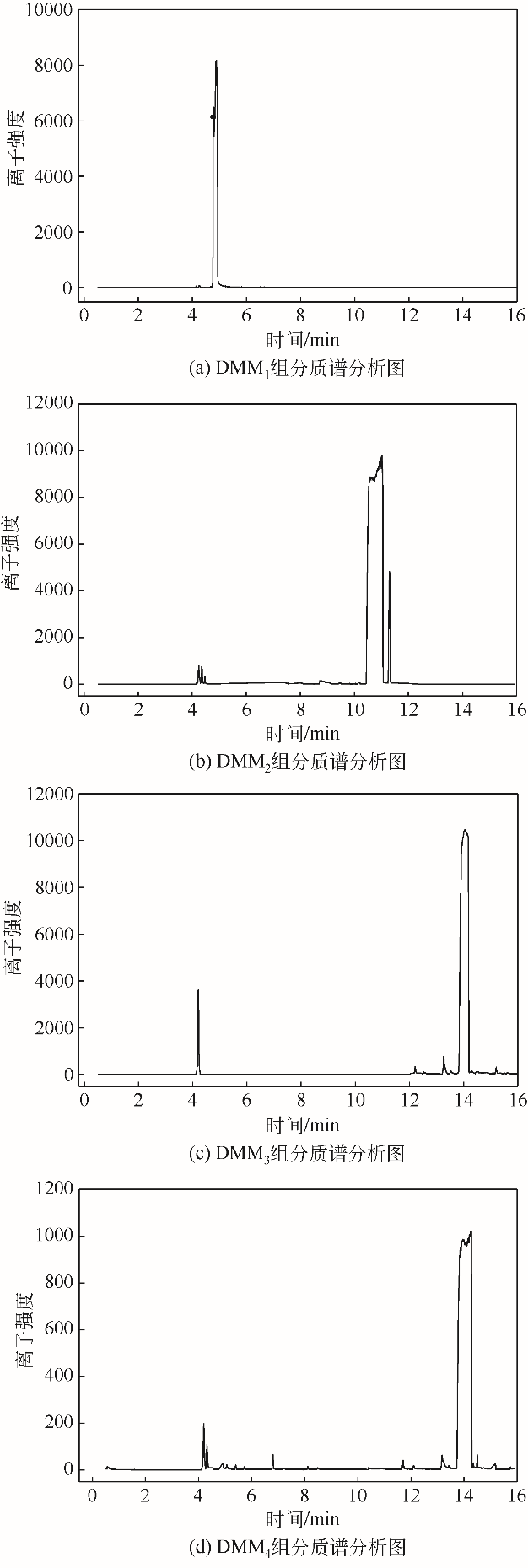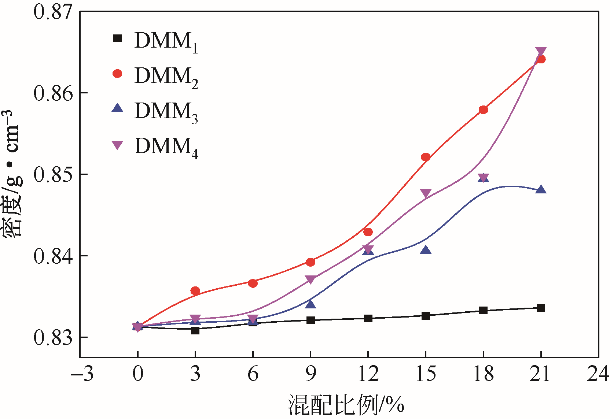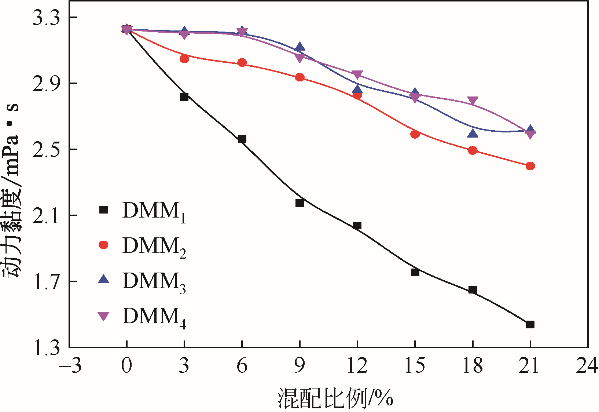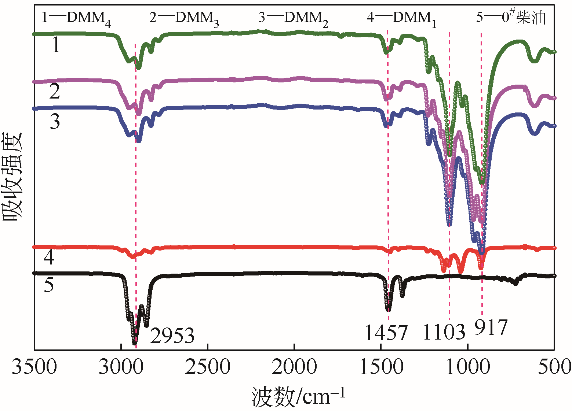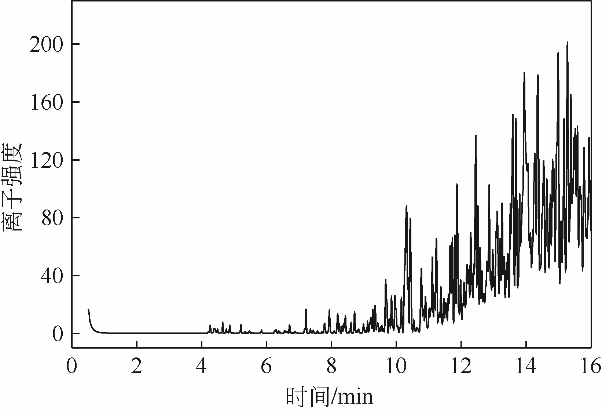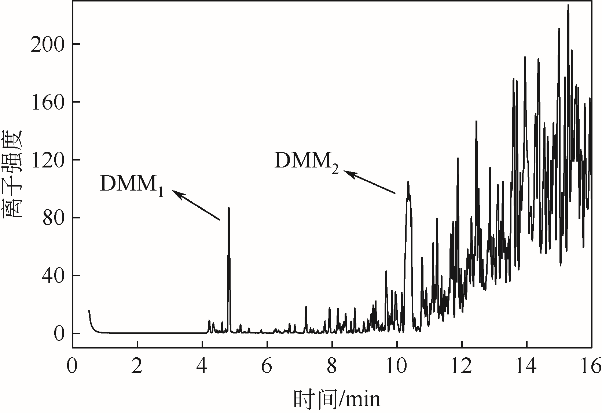| 10 |
WANG X D,XIONG C H,AN G J,et al.Study on the effects of oxygenated fuels on diesel engine performance[J].Applied Mechanics and Materials,2014,672:1580-1583.
|
| 11 |
PELLEGRINI L,MARCHIONNA M,PATRINI R,et al.Emission performance of neat and blended polyoxymethylene dimethyl ethers in an old light-duty diesel car: 2013-01-1035 [R].Washington D C, USA:SAE,2013.
|
| 12 |
张鹏,刘英斌,葛永睿,等.0#车用柴油调和方案[J].石化技术与应用,2018,36(6):389-392.
|
|
ZHANG Peng,LIU Yingbin,GE Yongrui,et al.0# Automotive diesel blending scheme[J].Petrochemical Technology and Application,2018,36(6):389-392.
|
| 13 |
谢永杰.石大科技汽柴油调和优化的研究[D].青岛:中国石油大学(华东),2015.
|
|
XIE Yongjie.Research on the optimization of gasoline and diesel blending in Shida Technology [D].Qingdao:China University of Petroleum (East China),2015.
|
| 14 |
应学海.柴油降凝剂合成与性能研究[D].青岛:中国石油大学(华东),2013.
|
|
YING Xuehai.Synthesis and performance of diesel pour point depressant [D].Qingdao:China University of Petroleum (East China),2013.
|
| 15 |
LUO Kun,SHAO Changxiao,CHAI Min,et al.Level set method for atomization and evaporation simulations[J].Progress in Energy and Combustion Science,2019,73:65-94.
|
| 16 |
GAD H M,IBRAHIM I A,ABDEL-BAKY M E,et al.Experimental study of diesel fuel atomization performance of air blast atomizer[J].Experimental Thermal and Fluid Science,2018,99(14):211-218.
|
| 17 |
Magin LAPUERTA,Jose RODRIGUEZ-FERNANDEZ,FERNANDEZ- RODRIGUEZ David,et al.Modeling viscosity of butanol and ethanol blends with diesel and biodiesel fuels[J].Fuel,2017,199(1):332-338.
|
| 18 |
张光超,伏广功,蒋齐秦,等.柴油机替代燃料的喷雾特性研究综述[J].内燃机与配件,2017(4):27-29.
|
| 1 |
张海冰.中国石油进口安全研究[D].济南:山东大学,2017.
|
|
ZHANG Haibing.Research on China petroleum import safety [D].Jinan:Shandong University,2017.
|
| 18 |
ZHANG Guangchao,FU Guanggong,JIANG Qiqin,et al.Review of spray characteristics of diesel alternative fuels[J].Internal Combustion Engines and Components,2017(4):27-29.
|
| 19 |
王希在,胡江涌,闻环,等.中红外光谱法快速检测柴油中的聚甲氧基甲缩醛[J].广东化工,2019,46(7):203-204, 209.
|
| 2 |
陈婉.油控研究:中国石油消费2025年达到峰值[J].环境经济,2019(s1):96-97.
|
|
CHEN Wan.Oil control research: China's oil consumption peaked in 2025[J].Environmental Economics,2019 (s1):96-97.
|
| 19 |
WANG Xizai,HU Jiangyong,WEN Huan,et al.Rapid detection of polymethoxyformal in diesel by mid-infrared spectroscopy[J].Guangdong Chemical Industry,2019,46(7):203-204, 209.
|
| 20 |
邴姗.多组分有机混合物及石油产品的近红外光谱分析方法研究[D].西安:西安石油大学,2016.
|
| 3 |
郭春垒,范景新,臧甲忠,等.柴油高值化综合利用技术发展现状及分析[J].化工进展,2018,37(11):4205-4213.
|
|
GUO Chunlei,FAN Jingxin,ZANG Jiazhong,et al.Development status and analysis of high-value comprehensive utilization technology of diesel oil[J].Chemical Industry and Engineering Progress,2018,37(11):4205-4213.
|
| 4 |
张新伟,李杰,倪向前.聚甲氧基二甲醚合成技术的产业化进展[J].化工进展,2016,35(7):2293-2298.
|
|
ZHANG Xinwei,LI Jie,NI Xiangqian.Progress in industrialization of polymethoxyl dimethyl ether synthesis technology[J].Chemical Industry and Engineering Progress,2016,35(7):2293-2298.
|
| 5 |
KASS M D,JANKE C J,CONNATSER R M,et al.Compatibility assessment of fuel system elastomers with bio-oil and diesel fuel[J].Energy Fuels,2016,30(8):6486-6494.
|
| 6 |
郑妍妍,唐强,王铁峰,等.聚甲氧基二甲醚的研究进展及前景[J].化工进展,2016,35(8):2412-2419.
|
|
ZHENG Yanyan,TANG Qiang,WANG Tiefeng,et al.Research progress and prospects of polymethoxy dimethyl ether[J].Chemical Industry and Engineering Progress,2016,35(8):2412-2419.
|
| 7 |
邓小丹,韩冬云,李秀萍,等.聚甲氧基二甲醚对柴油性质的影响[J].当代化工,2013,42(11):1508-1510, 1515.
|
|
DENG Xiaodan,HAN Dongyun,LI Xiuping,et al.Effect of polymethoxy dimethyl ether on diesel properties[J].Journal of Contemporary Chemical Industry,2013,42(11):1508-1510, 1515.
|
| 8 |
刘海利,詹月辰,陈春会,等.聚甲氧基二甲醚对柴油质量性能的影响[J].石油商技,2017,35(2):40-46.
|
|
LIU Haili,ZHAN Yuechen,CHEN Chunhui,et al.Effect of polymethoxy dimethyl ether on quality and performance of diesel oil[J].Petroleum Business Technology,2017,35(2):40-46.
|
| 9 |
PELLEGRINI L,MARCHIONNA M,PATRINI R,et al.Emission performance of neat and blended polyoxymethylene dimethyl ethers in an old light-duty diesel car[R].Washington, DC, USA:SAE,2013.
|
| 20 |
BING Shan.Near-infrared spectroscopy analysis of multi-component organic mixtures and petroleum products [D].Xi'an:Xi'an Petroleum University,2016.
|
 ),Meng YUAN2,Zhimei ZHANG2,Yingyun QIAO2,Yuanyu TIAN1,2(
),Meng YUAN2,Zhimei ZHANG2,Yingyun QIAO2,Yuanyu TIAN1,2( )
)
